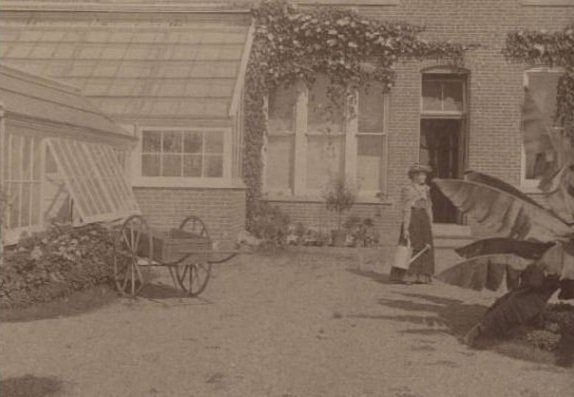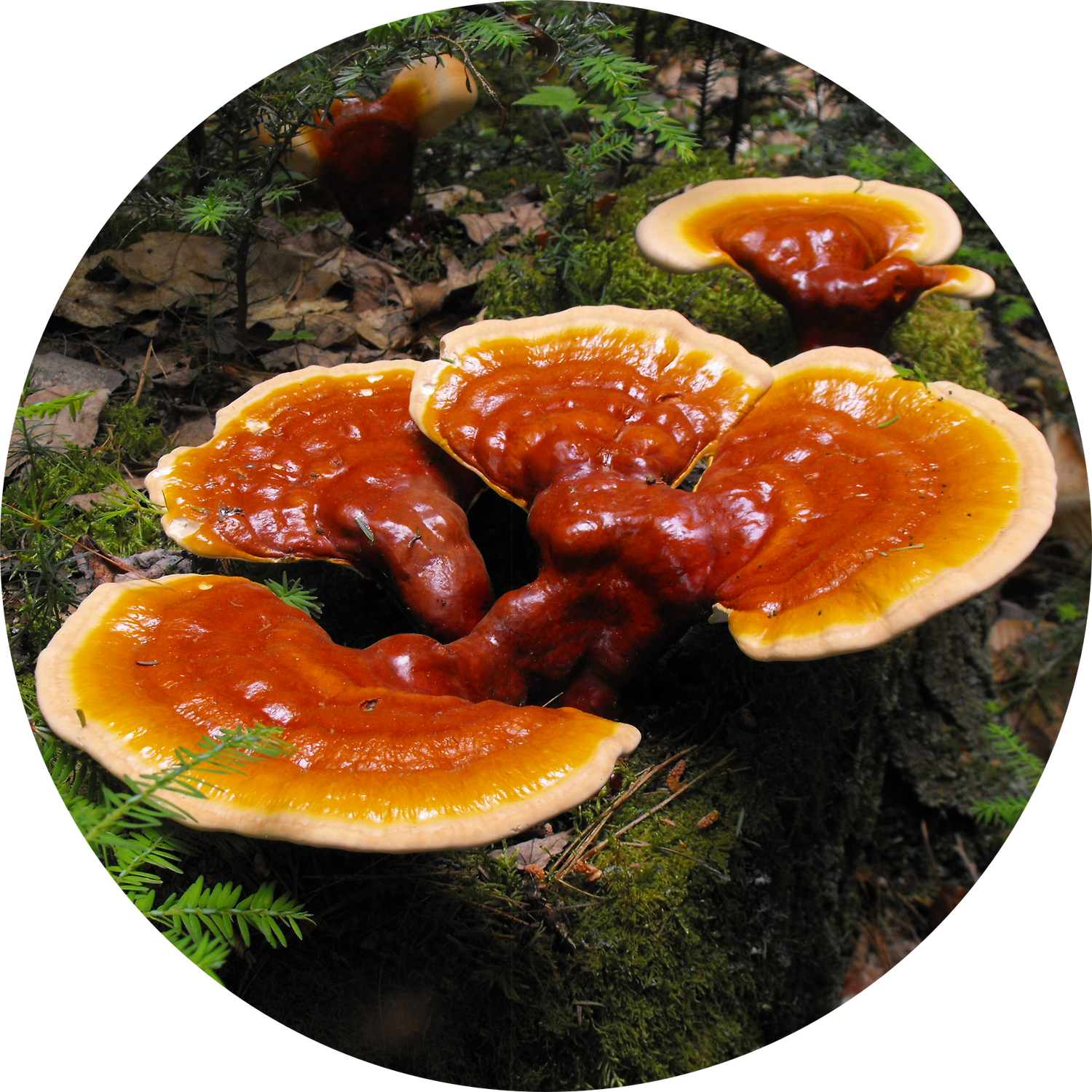
“A MAN OF SMALL STATURE, BUT LARGE PRESENCE”:
JOSEPH CHARLES ARTHUR (1850–1942)
Originally prepared for the Purdue University Herbaria
“Joseph Charles [J. C.] Arthur (1850–1942) was a remarkable man. He decided early on a career in botany and proceeded with unremitting persistence to reach that goal. By any standard he succeeded.” – George B. Cummins (1978).
EARLY LIFE AND COLLEGIATE STUDIES
J. C. Arthur was born in Lowville, NY on January 11, 1850. Early in his childhood, his family moved to a farm near Charles City, Iowa, and from here it was that he developed an interest in flowering plants. This curiosity was neither encouraged or understood by his parents, Charles and Ann, who did not believe botany to be a financially successful pursuit for their only son. Arthur would go on to state that his parents did not believe this vocation could “bring in enough [money] to keep a cat alive.”
Arthur was undeterred, and in 1869 he was one of the first students to enroll at Iowa State College (now University), at which he planned to study botany. Unfortunately, no botanists were employed there at the time, but in Arthur's second year, Charles E. Bessey obtained a professorship at Iowa State College. Bessey would go on to become an influential voice in North American botanical taxonomy, eventually devising his own classification system of plant life, known as the Bessey system, and becoming the President of the American Association for the Advancement of Science (AAAS) in 1911. This was Bessey’s first appointment, and it was under his guidance that Arthur began his formal study of botany. Adding fuel to the spark of Arthur’s interest in plant pathogens, Bessey purchased a collection of North American rust fungi from the herbarium of venerated botanist Moses A. Curtis before his death in 1872. Given Arthur’s alphabetically advantageous name, he had the honor of being both the first B.S. in Botany (1872) and M.S. (1877) granted by Iowa State College.
During and after his M.S. program, Arthur became an instructor in botany at Iowa State (1876), the University of Wisconsin (1879–1881), and the University of Minnesota (1882). Between 1884 and 1886, Arthur split his time in the Finger Lakes region of New York, simultaneously serving as the first botanist at the New York Agricultural Experiment Station in Geneva and in 1886 earning a D. Sc. from Cornell University (once again, honored as the first to do so).
RESEARCH AND PUBLICATIONS
While at the Agricultural Experiment Station in Geneva, NY, Arthur investigated fire blight of pears in work that was so pioneering that in 1971 phytopathologist Kenneth F. Baker concluded “that Arthur [in 1885], rather than [plant pathologist Thomas J.] Burrill [in 1880], first presented convincing proof that bacteria could cause plant disease.” Baker considered Arthur’s “convincing proof” to be more thoroughly exhibited than Burrill's methods. Arthur took bacterial inoculum from infected pear limbs and serially diluted this inoculum in culture medium. He then showed that, even when using the weakest dilution in the series, exposure of healthy plant material to the inoculum resulted in infected plants, showing symptoms of the disease, from which the bacteria could once again be detected. Further, by filtering the inoculum through an earthenware vessel, he removed the bacteria and showed that the filtrate itself did not transmit the disease. Effectively, Arthur demonstrated the scientific criteria that would go on to be more widely known as Koch’s postulates, a full five years before that procedure was published.
In 1885, while still at the New York Agricultural Experiment Station, Arthur attended an AAAS meeting in New York City. During a break in the summit, Arthur was taken on a tour of a pasture in the Bronx that was to become the future site of the New York Botanical Garden. Arthur was told that the Garden was spearheading an effort to publish systematic descriptions of the entire North American flora, and he was favored to be in charge of the section on rust fungi. Arthur was elated by this news, as was the New York Agricultural Experiment Station, where he was granted increased freedom to study rusts. For his part, Arthur joined a consortium of collaborators to write 12 parts of the North American Flora, totaling 884 pages of descriptions, measurements, and host and distribution records of rust fungi. The first part was published in 1907 and the last in 1931.
ARTHUR AT PURDUE UNIVERSITY
Arthur was hired in 1887 as the Professor of Botany and head of what would become the current Department of Botany and Plant Pathology at Purdue University. The following year he was further appointed as the Professor of Vegetable Physiology and Pathology at the Purdue University Agricultural Research Station. Arthur would spend 29 years at Purdue University before retiring as Professor Emeritus of Botany in 1915.
It was at Purdue University where Arthur began a 19-year experiment in the culturing of American species of rust fungi. The goal of this work was to identify a species concept appropriate for rust fungi, many of which exhibit up to five different spore types and can alternate between two hosts, known as heteroecism. The heteroecious life cycles of most rust fungi species were not fully known or completely unexplored at the time. Arthur’s methods involved direct observations of these fungi on different hosts to note the succession of spore types. In his search for alternate hosts on uninvestigated taxa, he performed over 3,750 inoculations on potential hosts, using fungi from 2,140 collections that were gathered by Arthur himself or were graciously provided by collaborators. Through these culture studies, Arthur realized the importance of host specialization to the delimitation of species. Arthur also introduced a greater emphasis on morphological, and especially microscopic characters, such as the number and arrangement of germ pores on spores that had up to this point, not been considered in the taxonomy of rust fungi.
While at Purdue University, Arthur was honored with several distinctions among his peers. Arthur was a charter member of the American Phytopathological Society (APS) and Botanical Society of America, the latter of which he was the President in both 1901 and 1919. After retirement in 1915, Arthur continued to be a driving force on campus and beyond, notably becoming the President of the APS in 1933 at the age of 83. Arthur continued to publish after retirement, with a lifetime total of 289 papers and books, the last of the former published in 1936 and that of the latter in 1934. His final book, Manual of the Rusts of United States and Canada, along with his contributions to the North American Flora, are widely considered to be his most valuable contributions to the field of plant pathology.
DISPUTE OVER HERBARIUM OWNERSHIP
During his tenure at Purdue University, Arthur accumulated over 40,000 rust fungi collections in the Herbarium he established at the Agricultural Research Station. Although these materials were physically accommodated at Purdue University, Arthur considered these specimens to be his property, as the vast majority of supplies in the Herbarium had been financed out of his own pocket. After being told that the Herbarium was the property of Purdue University, in July 1918, “I [Arthur] asserted my ownership, and to prove it, removed the whole mounted collection to my home.” This caused a standoff with Winthrop E. Stone, President of Purdue University, who directed (via notification by the Tippecanoe County Sheriff’s Office) that Arthur return to Purdue University the Herbarium collections and all associated papers, drawings, and notes relating to his work with the North American Flora. On August 5th, 1918, the Trustees of Purdue University and Arthur settled on an agreement to return the Herbarium back to campus. The agreement had several stipulations, with the three most prominent being: (1) that Arthur be granted the continuing privilege to use the Agricultural Research Station facilities for his work; (2) that the collection be designated and known as the “Arthur Herbarium” (now more appropriately the Arthur Fungarium (PUR)); (3) that Arthur be reimbursed for his expenses and paid at the rate of 3.5 cents per collection for the Herbaria’s holdings, covered by the agreed upon lump sum of $1000. Further payment of $450 was made by Purdue University in 1930 to acquire Arthur’s personal reprint collection of rust fungi literature.
PERSONAL LIFE
On June 12, 1901, Arthur married Emily Stiles Potter, a native daughter of a prominent family in Lafayette, Indiana. Emily was a civically-minded member of the city and an active member of the Presbyterian church and Needlework Guild. After their marriage, the Arthurs lived in her family’s “old homestead”, a two-story Greek Revival house built in 1855 that was Emily’s home throughout her entire life. The William Potter House, named after Emily’s father, was placed on the National Register of Historic Places in 1983.
Arthur was fastidious, or as PUR Director George B. Cummins (1938-1970) commented, “Arthur was a gentleman of the old school, dignified, courteous, precise of speech, and careful of grooming; a man of small stature but large presence.” Arthur’s tenacious investigations into plant pathology seem indicative of a man with a single-minded focus on academic research. However, Arthur wrote of himself that “beside the love of scientific pursuits, a decidedly artistic temperament gave strong leaning toward both music and art.” Indeed, we know that, as he states, “musical composition received some attention”, as there is at least one published piece written by Arthur in 1902, an ode to his long-time home institution, “Vive Purdue”.
The Arthurs had no children and seemed content with their humble lifestyle. Cummins noted that after Purdue University’s payments in 1918 and 1930, the Arthurs took advantage of the exorbitant sums and traveled together to Europe on both occasions. In 1935, Emily underwent an emergency appendicitis operation and died two days later at the age of 73. Afterwards, Arthur rarely visited the herbarium and spent winters in California or Florida. Sometime following Emily’s death, Arthur moved to Brook, Indiana, some 40 miles from Purdue University, where he died on April 30, 1942 at the age of 92. He was laid to rest aside Emily in Spring Vale Cemetery, Lafayette, Indiana.

